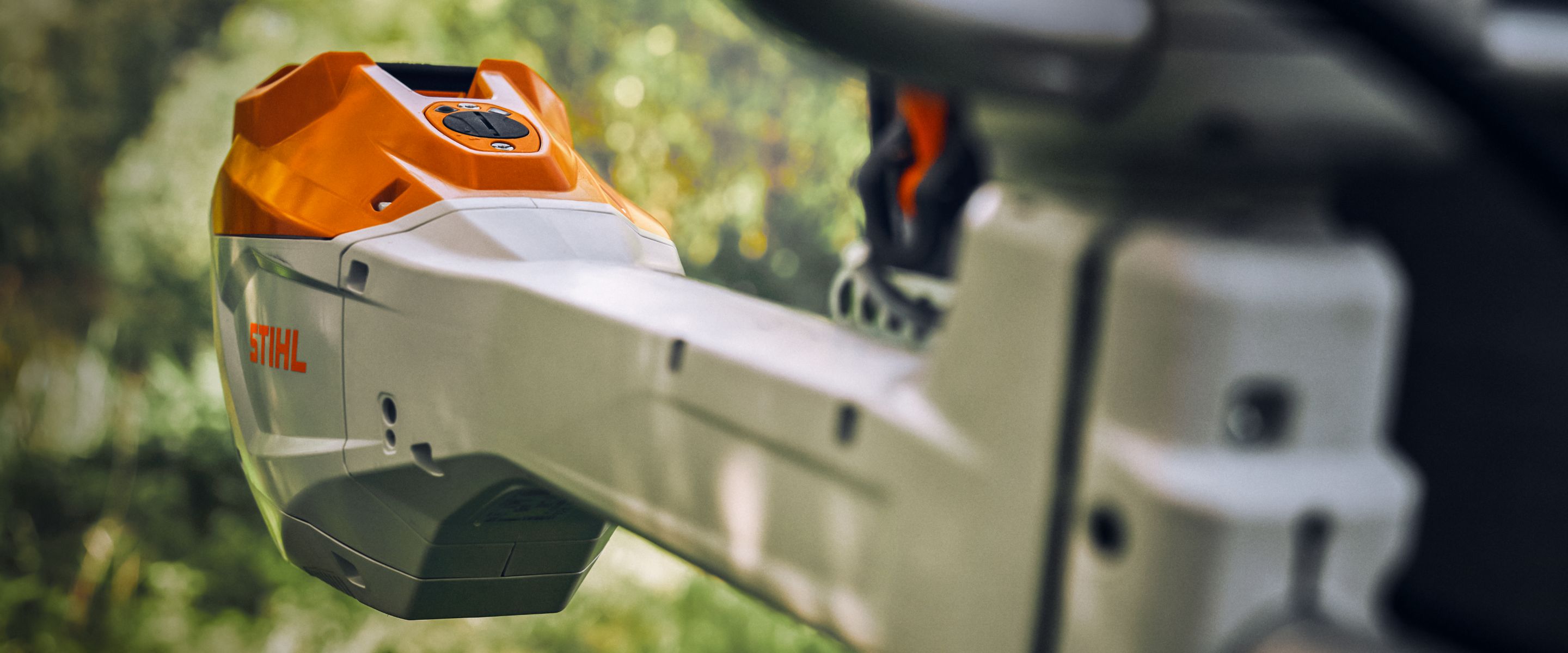
Second life for professional tools
In the “Refurbished” project, STIHL reconditions used professional tools and sells them to gardening fans
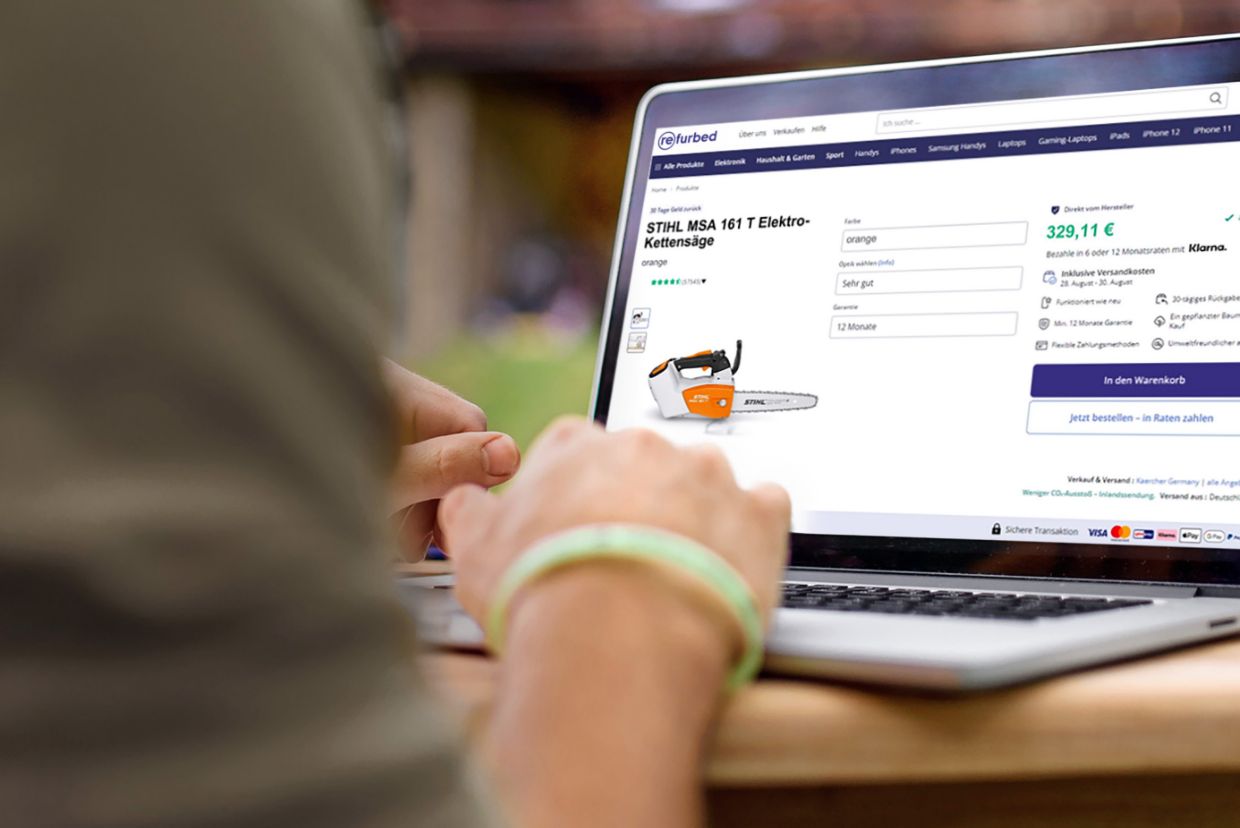
STIHL has been a technology leader for almost 100 years. An accolade that is also our mission and incentive for the future. Our products are innovative, durable, and of the highest quality. Developed to make it easier for people to work in and with nature.

Company founder Andreas Stihl was primarily driven by his customers’ needs, which is why he never stopped enhancing STIHL products and launching new tools. In 1959, he revolutionized forestry work with the STIHL Contra, the first gearless gasoline-powered chainsaw. The technical foundations of the Contra have endured and are constantly being optimized with innovations: Whether in the first anti-vibration system from 1965, fuel-saving intelligent engine management, exhaust gas reduction technologies, the weight-saving magnesium piston, fuel injection, or the battery drive – performance, durability, service, working comfort, and safety as well as environmental protection remain the principles behind all STIHL products. Through innovation, we are working to cement our market leadership.
Our customers have high standards when it comes to STIHL. We deliver on them with our high level of vertical integration, which we intend to strategically expand further. This approach ensures our complete mastery of our technologies and products. Our suppliers are committed to the same product standards that we have in place at STIHL. Only together can we guarantee our well-established premium quality. The guiding principle behind our international and interdisciplinary development team is to optimally unite performance, durability, and ergonomics in our products. As a result, STIHL products not only meet the regulations and standards for safety, exhaust emissions, and noise, for example – in many cases they go far beyond.
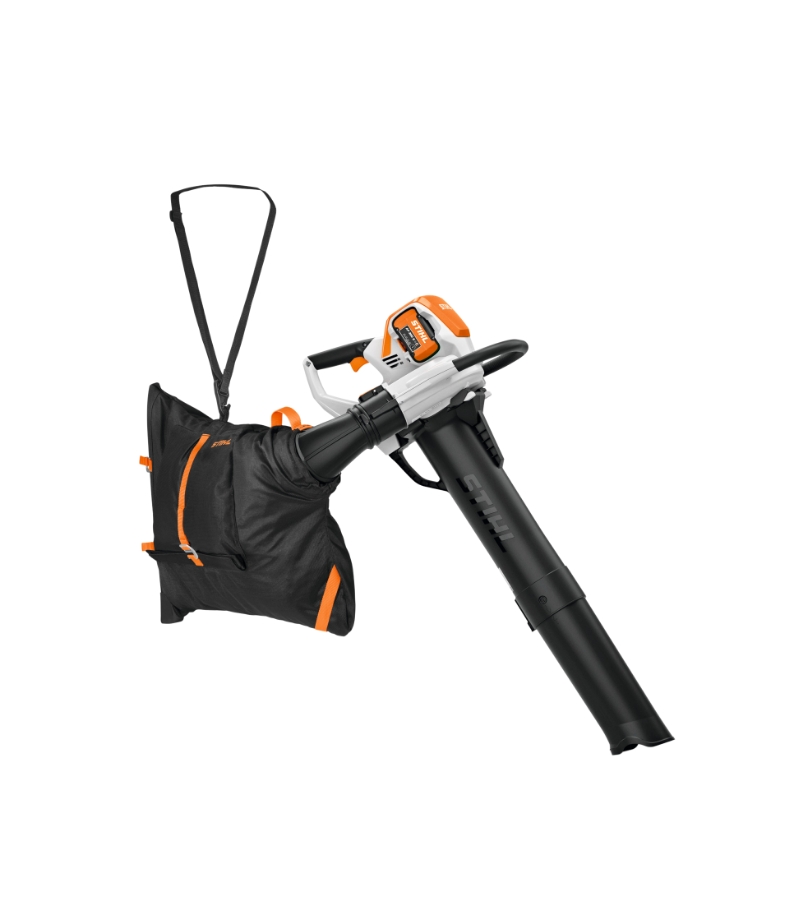
In the reporting year, STIHL launched the SHA 140: the first STIHL battery-operated professional vacuum shredder, which outperforms the most powerful gasoline-powered model in the STIHL range. It allows professional users to quickly and easily collect and shred leaves, green waste, and dirt. Its performance, low noise levels, and locally emission-free drive make it the ideal tool for professional use in public spaces.
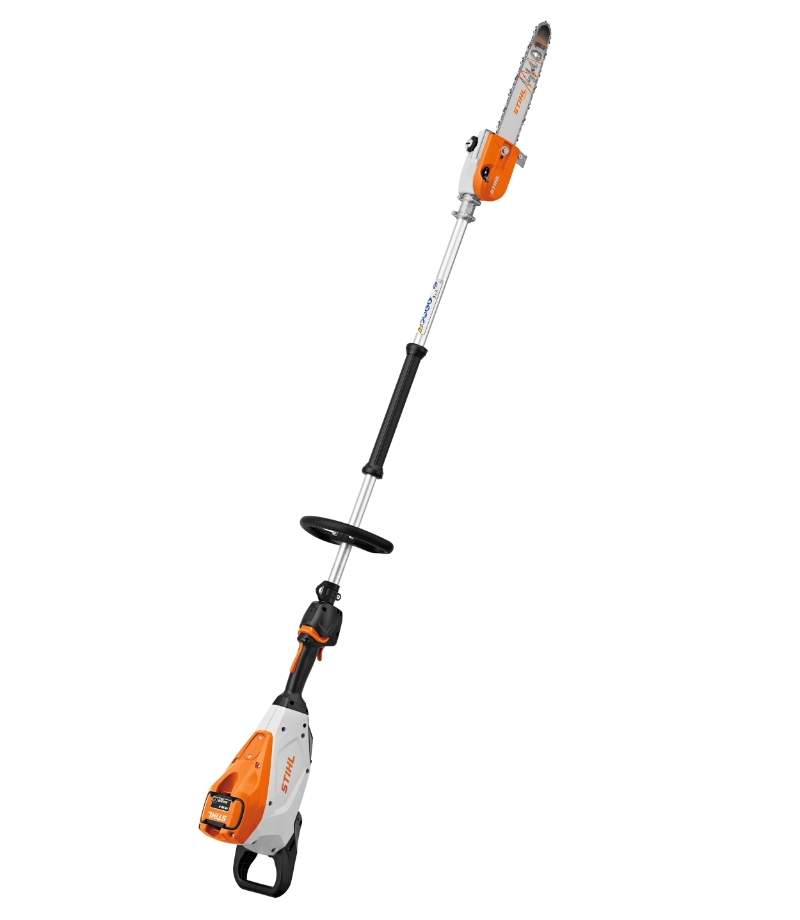
The HTA 150 is STIHL’s first cordless pole pruner specifically designed for forestry maintenance work, offering exceptional ergonomics: The HTA 150 features a short, exceptionally lightweight rigid shaft with a hollow tube. When combined with the STIHL ADVANCE X-TREEm HT forestry harness, it enables efficient and low-fatigue young stand tending from a standing position.
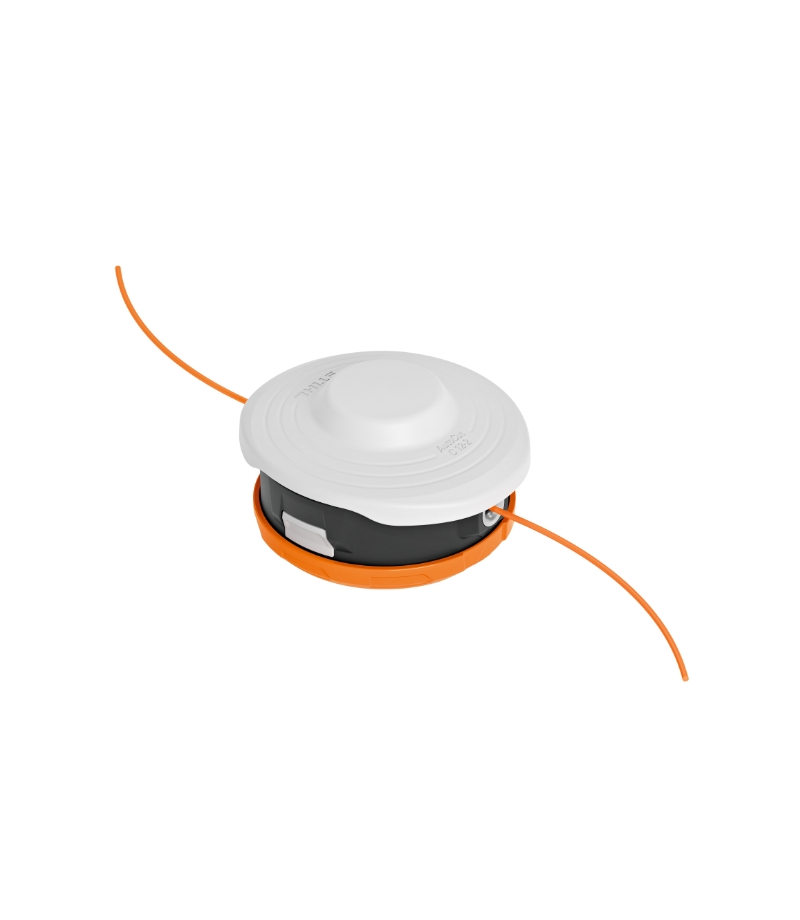
The AutoCut C 12-2 mowing head with rapid click system was presented with an award by the German Federal Association for Gardening, Landscaping, and Sports Field Construction at the GaLaBau trade fair in Nuremberg. Thanks to the innovative quick-change system, mowing heads can be removed and replaced without tools, with no more than a click. When working with brushcutters, mowing heads can be replaced quickly and easily and wound by hand from an upright position.
STIHL products are characterized by their durability, reliability, ease of use, high-quality workmanship, and repairability. These aspects are fundamental to how we view ourselves in relation to our products.
We lay the foundation for STIHL quality right from the product development stage: Testing techniques – many developed in-house – are central to how we ensure quality, reduce errors, and continuously improve. These include the endurance testing facilities that STIHL operates at the development center in Waiblingen and in São Leopoldo, Brazil: A wide variety of tool classes are tested at these sites around the clock. Each model undergoes a detailed test plan, controlled by our specially developed test program. The software simulates typical types of practical use. The resulting data helps us to ensure that our tools work smoothly and reliably. In addition to endurance testing, we conduct a variety of other procedures, including vibration and noise tests as well as material, fuel, and lubricant tests.
For STIHL, quality means ensuring that all components work together seamlessly to provide the greatest value to our customers. To ensure this, we traditionally rely on a high level of vertical integration. Our quality management system ensures that top quality is achieved consistently. We pursue a comprehensive quality assurance strategy in production and materials management. Throughout our manufacturing facilities, we utilize various testing and quality control methods, including production line cameras that verify proper component assembly.
In line with the circular economy, repairability is also one of the key principles of every new development. Customers can obtain spare parts from STIHL dealers or the online store – even after a series has been discontinued, they are available for at least another ten years. With this approach, we consistently adhere to the EU Right to Repair Directive, which entered into force in July 2024 and must be transposed into national law by June 2026. In 2022, we adopted a Group standard that created a common understanding of the right to repair throughout the Group. At the same time, we want to protect consumers from illegal or improper manipulation of parts that are essential to a product’s environmental and/or safety performance. Our standard therefore also determines which repair work should be left to authorized dealers. Our more than 52,000 authorized dealers worldwide assure the maintenance and – if necessary – repair of all STIHL equipment.
Our digital solutions, such as the STIHL connected app, continue to improve service and support for our customers: For example, the app allows professional users to keep track of the condition of their tools and notifies them in advance of upcoming maintenance. Service appointments can be arranged with dealers on the app and service-related tool data can be transmitted in advance, meaning the tool will be back in working order in next to no time.
The importance we attach to quality is also reflected in the fact that STIHL has defined it as a corporate objective and measures it in key figures. We analyze how figures on quality develop and introduce improvements as necessary. This is further supported by our systematic approach to obtaining customer feedback.
STIHL know-how is crucial for ensuring reliable quality and innovation. To secure know-how, we consistently expand our expertise in research and development (R&D) activities. Today, more than 1,300 engineers and technicians from various disciplines worldwide optimize existing products and develop new ones. In recent years, we have been building up expertise, particularly in the fields of digitalization, robotics, sensor technology, and artificial intelligence.
Our global positioning ensures that R&D takes into account the requirements and conditions of local markets and our production plants. To this end, we regularly obtain feedback from engineers at our international production companies. This is how we ensure that a STIHL product is suitable for the planned sales markets and that we can also manufacture it.
The Executive Board member for Research and Development at the founding company has overall responsibility for R&D. The founding company is also home to the Central product development department. All the departments involved must meet the strict guidelines of the STIHL product development process, which are defined in our internal directives.
STIHL held more than 2,500 patents and patent applications in the reporting year, protecting more than 800 separate inventions. Many of these strengthen our commitment to sustainability. We use an automated patent analysis tool to assign patents to the United Nations Sustainable Development Goals (SDGs). The majority of the 220 relevant inventions serve to reduce emissions and therefore contribute to SDG 13 (climate action) and SDG 9 (industry, innovation, and infrastructure). Our R&D activities as a whole also contribute to SDG 9, specifically its subgoal “Enhance scientific research and upgrade technological capabilities.”
The special fuel MotoMix Eco, which was further developed in the reporting year, underlines our ambitions in terms of sustainability: The ethanol-free alkylate fuel MotoMix Eco 20 contains 20 percent biogenic raw materials. Compared to an E0 fuel according to EN228, it achieves 25 percent lower carbon emissions. In addition, half of the canister is made from recycled material. MotoMix Eco 20 is expected to be available in the first quarter of 2025 and will replace MotoMix Eco.
Strict exhaust and emission regulations for combustion engines are driving our innovation work on gasoline-powered STIHL machines. At the same time, we are reinforcing our commitment in the rechargeable battery segment. Since the beginning of the reporting year, the limits for hydrocarbons (HC) and nitrogen oxides (NOx) for certain products in the U.S. state of California have been 0 grams per kilowatt hour. For STIHL, these regulatory decisions fuel our two-pronged approach to R&D: We are constantly optimizing our combustion engines, for example for the use of CO2e* fuels, so that we can secure our market leadership in gasoline-powered tools. At the same time, we are constantly expanding our battery expertise to continuously increase the sales share of our batterypowered tools.
In the search for the best solutions, STIHL also works closely with external experts, for example at universities. In addition, some STIHL employees hold teaching posts at various universities, and a large number of student employees regularly support the company by working on innovative research topics.
*CO2e (CO2 equivalent) is a unit of measurement indicating the effect of all greenhouse gases on the climate, which is expressed as the equivalent effect of carbon dioxide (CO2).
STIHL recognized the opportunities offered by digitalization years ago. In 2022, we also underscored its importance throughout our organization and made hardware digitalization part of our development focus, improving processes and creating synergies as a result. Analyzing more production data (“big data”) allows us to control production more efficiently. Operating data also provides us with valuable insights into where we can further improve the design of a product. When it comes to software and apps, on the other hand, we are primarily building up expertise to make our devices even more user-friendly.
We supplement our data expertise with electronics expertise. STIHL invests in robotics, sensor technology, artificial intelligence, and other fields with the aim of offering customers complete solutions for their applications. Our state-of-the-art center of excellence for battery and drive technology is located at the founding company in Waiblingen. A few years ago, we also further enhanced our battery strategy by teaming up with the Elrad International Group to found a joint venture for the production of electronic assemblies.
Circularity is one of the three focal areas of the STIHL sustainability strategy. A circular economy is geared toward consuming as few primary resources as possible and minimizing waste. We adhere to the 5 Rs: reduce, reuse, repair, refurbish, and recycle.
Efficient, resource-conserving use of materials is a guiding principle in STIHL production. Our quality standards also conserve resources, as they make our tools durable and repairable. Reusing or refurbishing products multiple times also contributes to a functioning circular economy. In 2025, STIHL will also launch a leasing service in Germany for the first time. In cooperation with financial institutions, we will offer our professional customers a complete leasing and product service package. This model will then be extended to other markets.
Devices or tools no longer fit for use can be recycled as a final step. We facilitate the recycling of our battery packs through our partnership with a specialized service provider, allowing our customers to return used batteries to designated drop-off points. In April 2024, STIHL Inc. in the United States, together with five other garden tool manufacturers, launched the first nationwide take-back and recycling program for high-performance lithium-ion batteries. Prior to this program, many batteries could only be returned to municipal recycling centers or regional providers. The High Energy Battery Recycling program, part of the industry initiative Call2Recycle, closes this gap.
We aim to make our processes and products increasingly recyclable. In a foundational development project, we have been building two technology platforms since the end of 2022, which have been optimized with regard to the intended circularity. In addition, we have further developed the metrics for recording circularity criteria as part of foundational development projects.
In 2024, we also continued our analysis of the potential for increasing the proportion of secondary raw materials in our products. We have evaluated various commercially available solutions as well as our own approaches to closed-loop recycling. We are currently examining follow-up projects.
As part of another project on the GHG accounting of our product-related emissions (product carbon footprint; PCF), we are working with other companies, NGOs, and research institutions to develop a proposal for creating a PCF specifically for our products. This involves creating specific product category rules for the products relevant to us and resolving certain conflicting objectives in our accounting.
We want our customers to be able to work safely and efficiently with our tools. Our product development is guided by rigorous adherence to technical standards and legal requirements, with designs that consistently incorporate state-of-the-art technology. STIHL often goes one step further: We are committed to offering our customers products that provide the best combination of safety and functionality. STIHL addresses this challenge with close interdisciplinary coordination during development, series production, and subsequent customer support.
STIHL provides comprehensive and easy-to-understand instruction manuals with every product. The information provided enables users to use their product safely at all times. STIHL also offers additional information for working safely with and in nature through various other channels. If customers have any unanswered questions, they can contact our global customer support team or authorized dealer network at any time to receive expert advice.
Continuously advancing our safety standards forms an integral part of our identity. In light of this commitment, STIHL is actively working on safety standardization in the working groups of global standardization organizations such as the ISO, ANSI, CSA, and IEC. This allows us to share our knowledge worldwide, including contributing our own findings on the strength of guards and handles as well as on electronic circuits and sensors to international standards.
As a technology leader, we take great pride in the countless innovations we have produced, especially in the field of customer safety. To ensure that our customers are fully on board with our safety philosophy, authorized dealers provide product instruction and safety training. Customers can also take advantage of this through our online sales channels.

STIHL is testing a sustainable idea in the “Refurbished” project: How about reselling used professional tools to private users on an online platform? And how would refurbished STIHL products with signs of use be received by gardening fans? Strategic Designer Cornelia Wintergerst, who heads the New Business project at STIHL, has the answers.
“Refurbished” means restored to a “like-new” condition. What is behind the STIHL project of the same name?
Cornelia Wintergerst With “Refurbished,” we are testing how we can tap into the circular economy megatrend with tools for forestry, garden, and landscape maintenance. We wanted to find out if there is a market for used and reconditioned STIHL products.
How was the test designed?
Cornelia Wintergerst We kicked things off by exploring the market in detail. Figures show that consumers today are much more sustainability-conscious. Platforms for refurbished products are becoming ever more popular – we’re still just scratching the surface of market potential. But why do people buy used tools? We conducted interviews with about 40 customers to gather firsthand insights.
And what are the purchase incentives?
Cornelia Wintergerst Refurbished products’ main selling point is their price. But people are also aware of sustainability: After all, I am making a sustainable decision when I give a STIHL tool a second life. At the same time, we learned from the interviews that a brand’s quality promise is also very important for refurbished tools.
»The signs of use on the tools didn’t bother the buyers at all.«
Cornelia Wintergerst Strategic Designer

In the summer of 2024, STIHL used the refurbed.at platform to sell used tools and test the waters. How did that work in detail?
Cornelia Wintergerst We bought up 120 used professional tools from the market – from chainsaws and clearing saws to hedge trimmers, pole pruners, and lawn mowers – and refurbished them in the workshop of our servicing center in Austria. Many of them were in a pretty interesting state, sometimes only single parts came back in the box. The team took the tools apart, cleaned them, checked them, and – if necessary – repaired them. They were then reassembled, repackaged, and shipped.
How was the response?
Cornelia Wintergerst We were surprised to learn that the tools were sold right from the very first day throughout the three-month test period. And that was achieved without any marketing! Around 90 percent of them went to private customers – a completely new target group for professional tools.
You interviewed buyers. Weren’t people concerned that the tools were clearly secondhand?
Cornelia Wintergerst We asked ourselves the same question beforehand. More than 50 percent of the tools had visible scratches. The great thing was: That didn’t bother people at all. On the contrary: Nine customers who bought one of these tools bought a second one during the test period, and most of them ordered another one with clear signs of use. This clearly seems to be completely fine for refurbished tools from the gardening sector – unlike, say, for smartphones.
The pilot was a success. What are the next steps?
Cornelia Wintergerst The focus now is on creating a streamlined business model within our organization for the centralized refurbishment and distribution of refurbished tools. After all, our project shows: The demand is there.
Our products make it easier to work in and with nature. They can be used to preserve and promote biodiversity. That is why biodiversity is central to our sustainability strategy.

Biodiversity is the basis for life on our planet. We raise awareness of the importance of biodiversity among both our professional and private users – and of how they can contribute to biodiversity with their STIHL products. This information is available across multiple channels – from our website and social media platforms to press releases, product manuals, and DIY tutorials. The growing awareness of biodiversity was also reflected in 2024 in the latest edition of the STIHL Garden Barometer, an annual representative survey of 1,000 garden owners. According to the survey, many respondents know that excessively well-kept gardens are detrimental to biodiversity, i.e. they restrict habitats for animals and plants. 56 percent would therefore be willing to keep their gardens less tidy – 22 percent already do.
ZAMA continued its commitment to endangered sea turtles in the Philippines in 2024: As part of the One for Pawikan project, employees built a protected hatchery, took on more than 20 nest sponsorships for turtle clutches, and helped over 100 hatchlings to be released safely into the water.
To improve our understanding of ecosystem interactions and the environmental impact of our products, we actively collaborate with academic institutions, research organizations, and experts as part of an ongoing learning process. We take what we learn in these partnerships and apply that knowledge directly to product development, model updates, and our communication efforts.
One example of this interdisciplinary learning and work is our cooperation with a research team at the University of Oxford, which we continued in 2024 together with another market player. In the project, we are investigating how small animals such as hedgehogs can be better protected from robotic lawn mowers. The project participants are currently developing hedgehog dummies that are as realistic as possible so that they can be used in future test processes. The long-term goal is to establish an industry standard for these test setups. In addition to the research project, we are continuously improving our robotic lawn mowers to increase the protection of small animals.
In May 2023, another interdisciplinary project was completed, which investigated the challenges of biodiverse land use in local communities. An important insight: Animal and plant diversity in cultivated landscapes can only be increased if people look after them. In addition to existing tools such as clearing saws and chainsaws, this requires new harvesting and cultivation techniques, and STIHL wants to play a major role in their development. Concrete product ideas were developed for this project based on this mindset.
We also integrated biodiversity even more firmly in the business and the value chain in 2024. The target statement for biodiversity in the product environment has been formulated and will be adopted at the beginning of 2025. Biodiversity is now also an integral part of the training courses for our key account managers and authorized dealers.
We are currently identifying which of our sites are located in protected areas as defined by the EU Commission. This will enable us to continuously evaluate the potential future impact of our business activities on these areas and take necessary measures to mitigate any negative impacts.
We plan to draw up Group-wide guidelines to support outdoor spaces that promote biodiversity at STIHL sites. The individual sites can then derive individual guidelines for projects that take into account the respective regional, climatic, and ecological conditions on the basis of our Group-wide guidelines. At our main facilities in Waiblingen, we have already launched pilot projects to enhance outdoor areas that promote biodiversity.